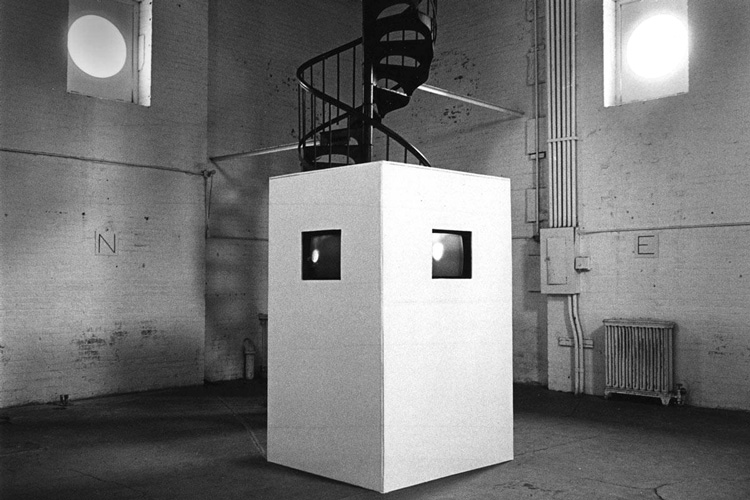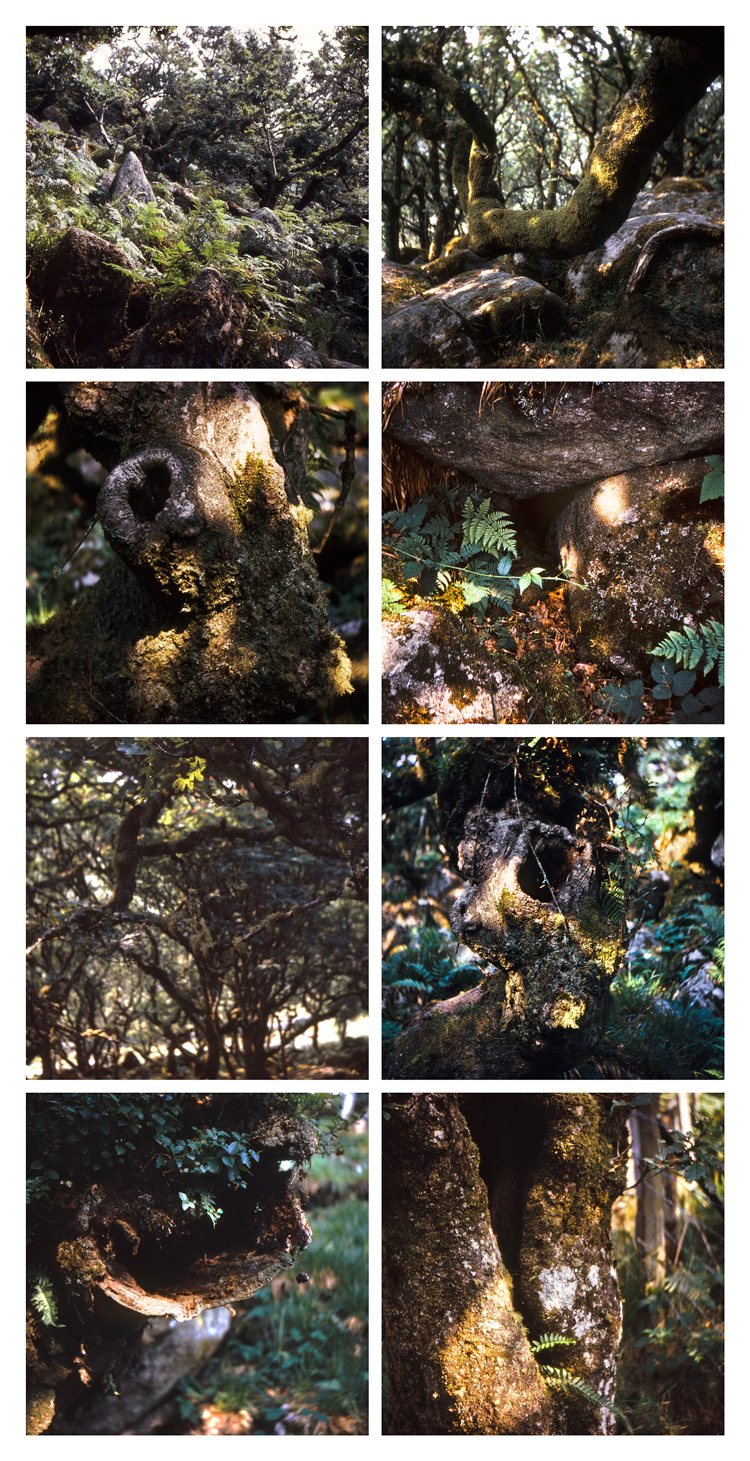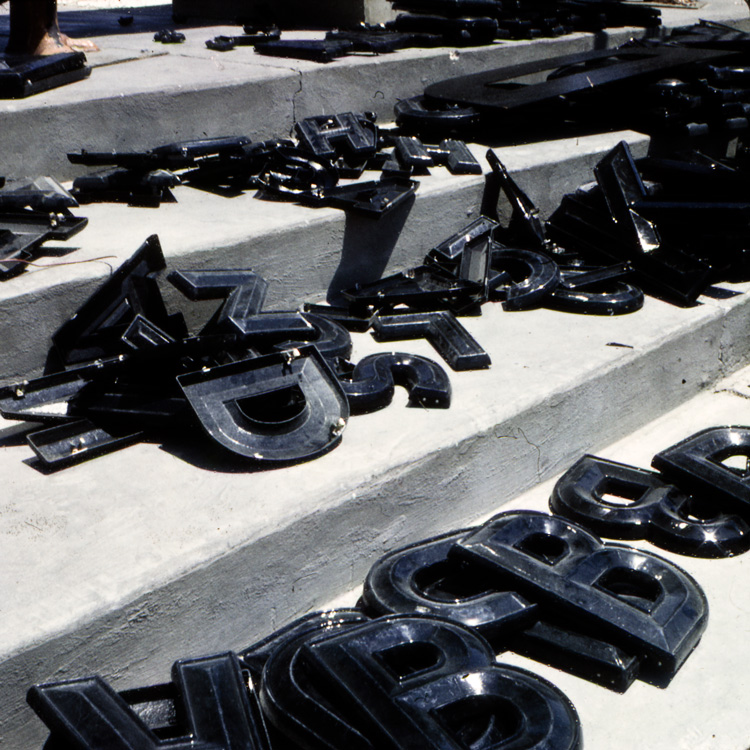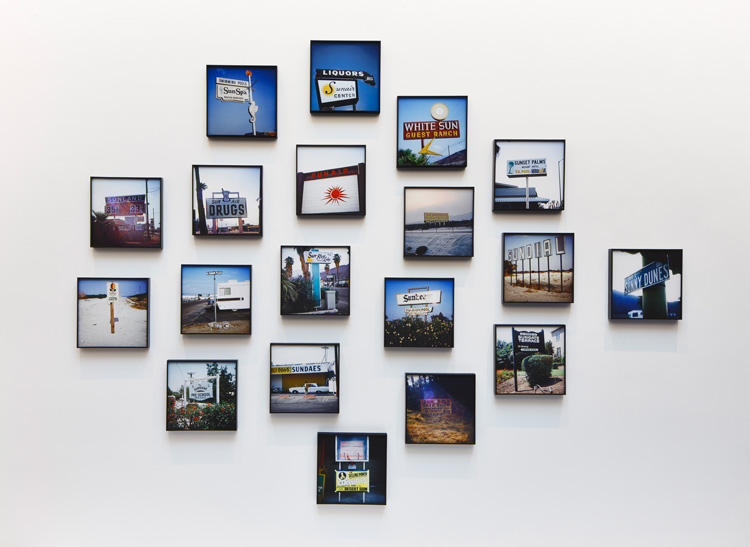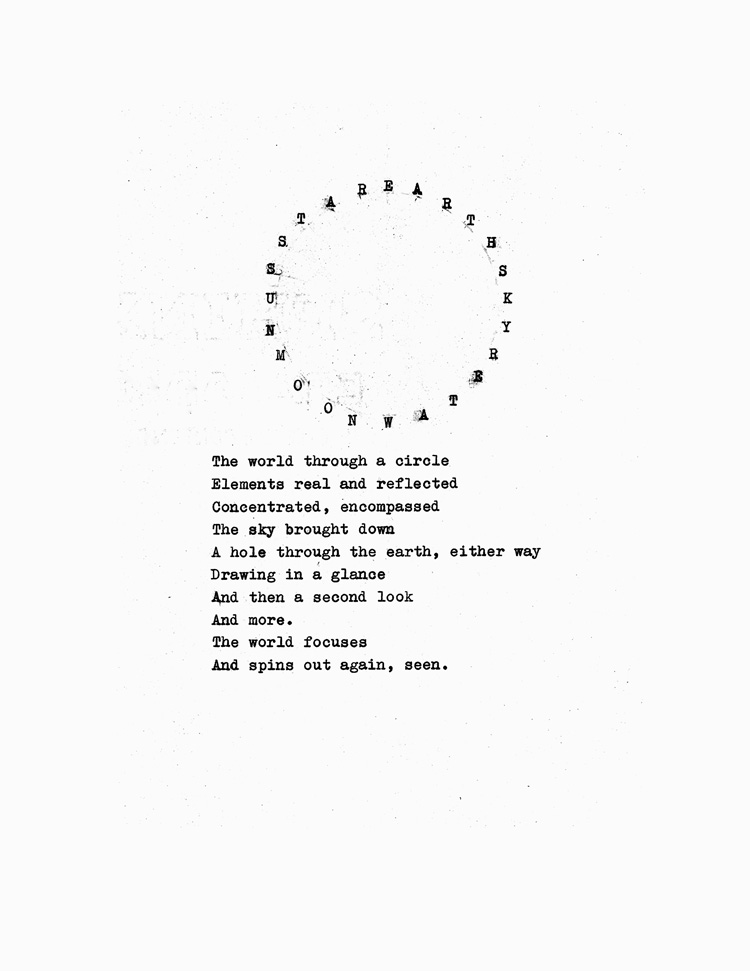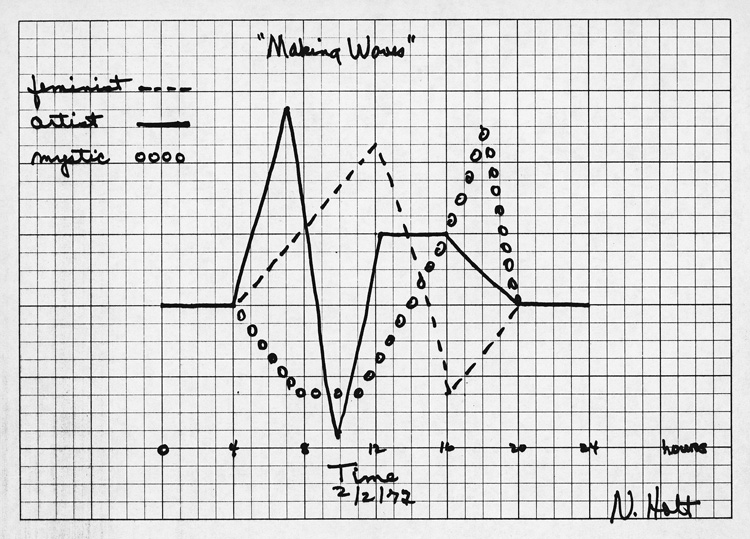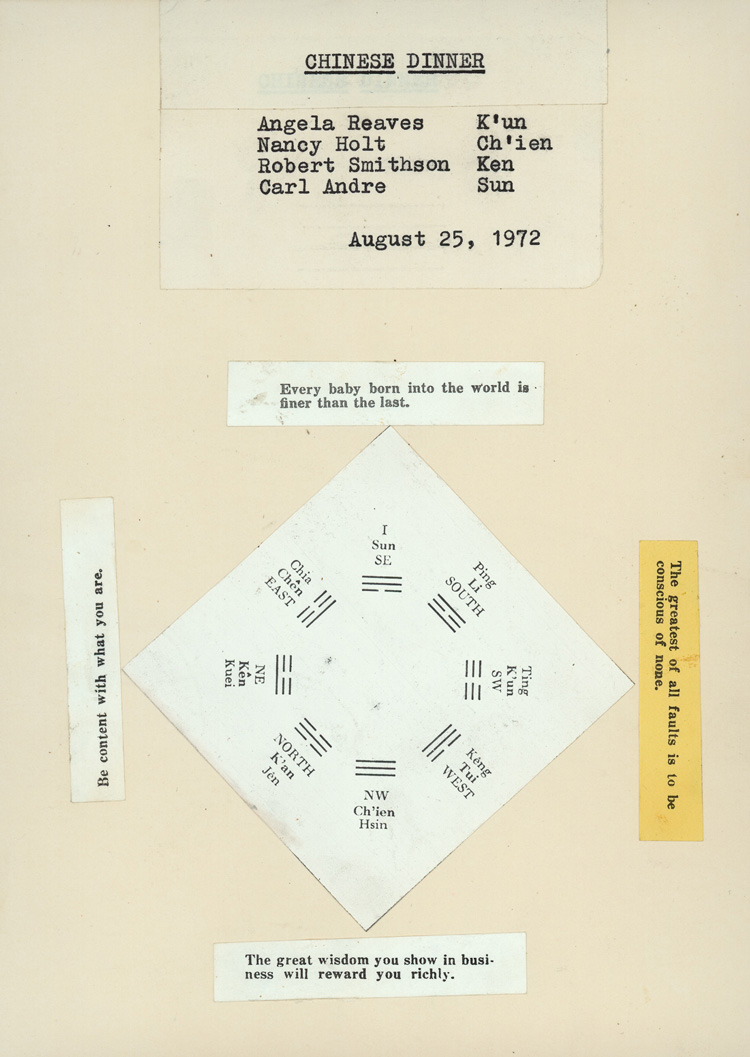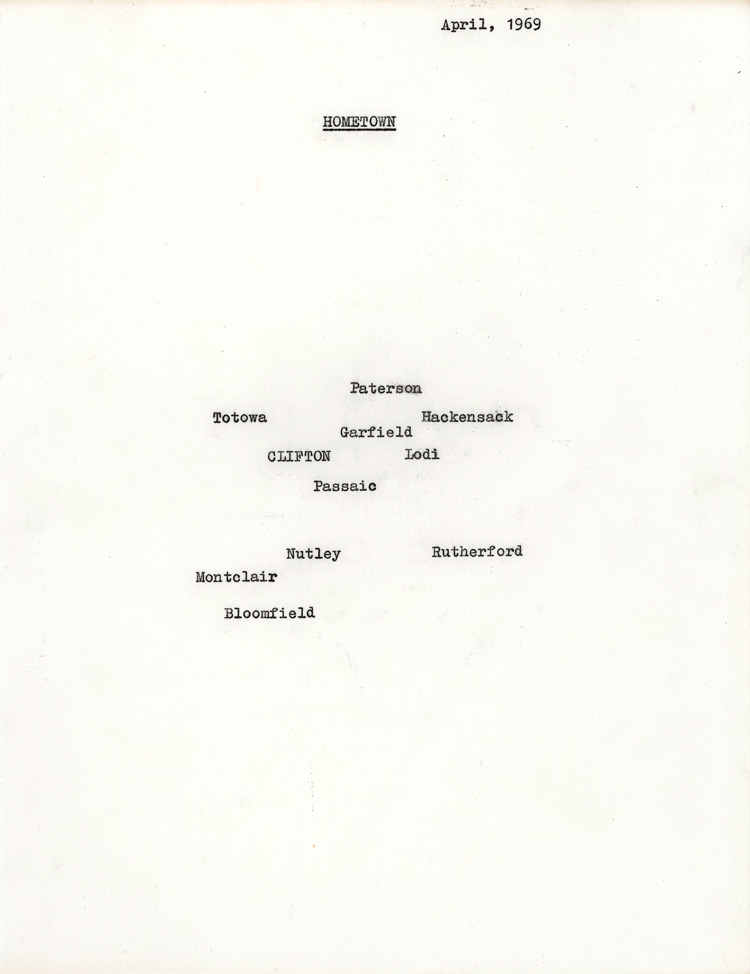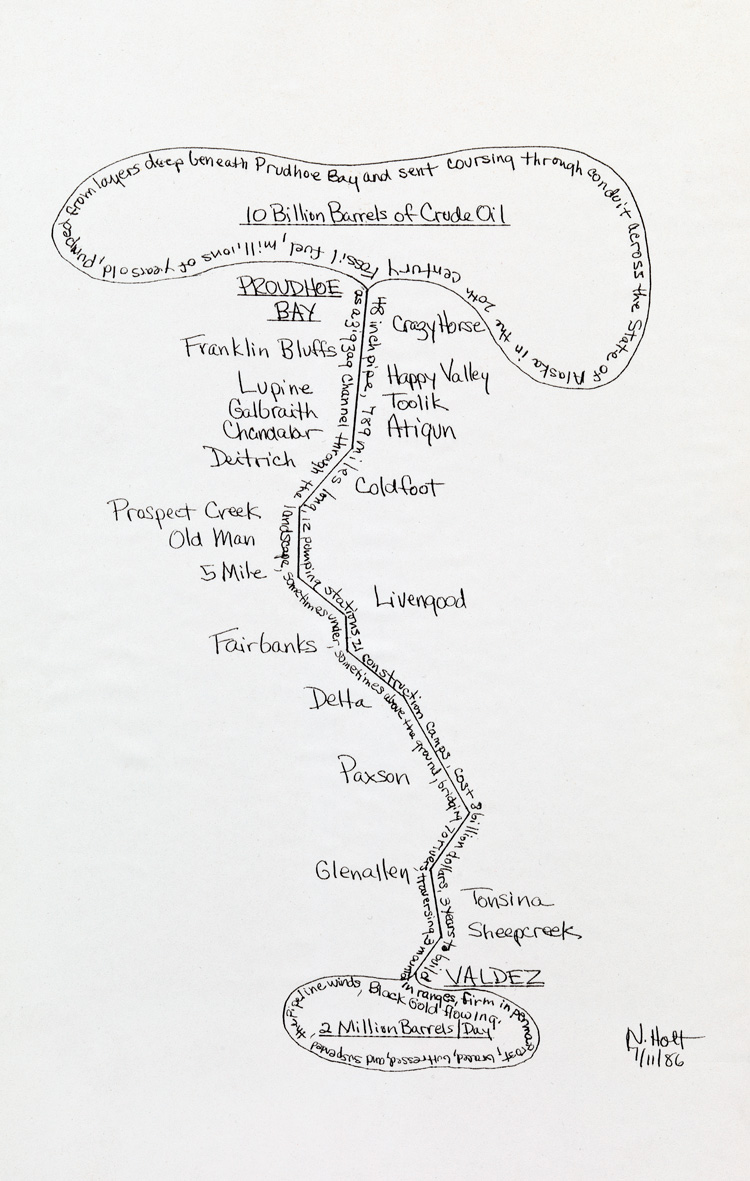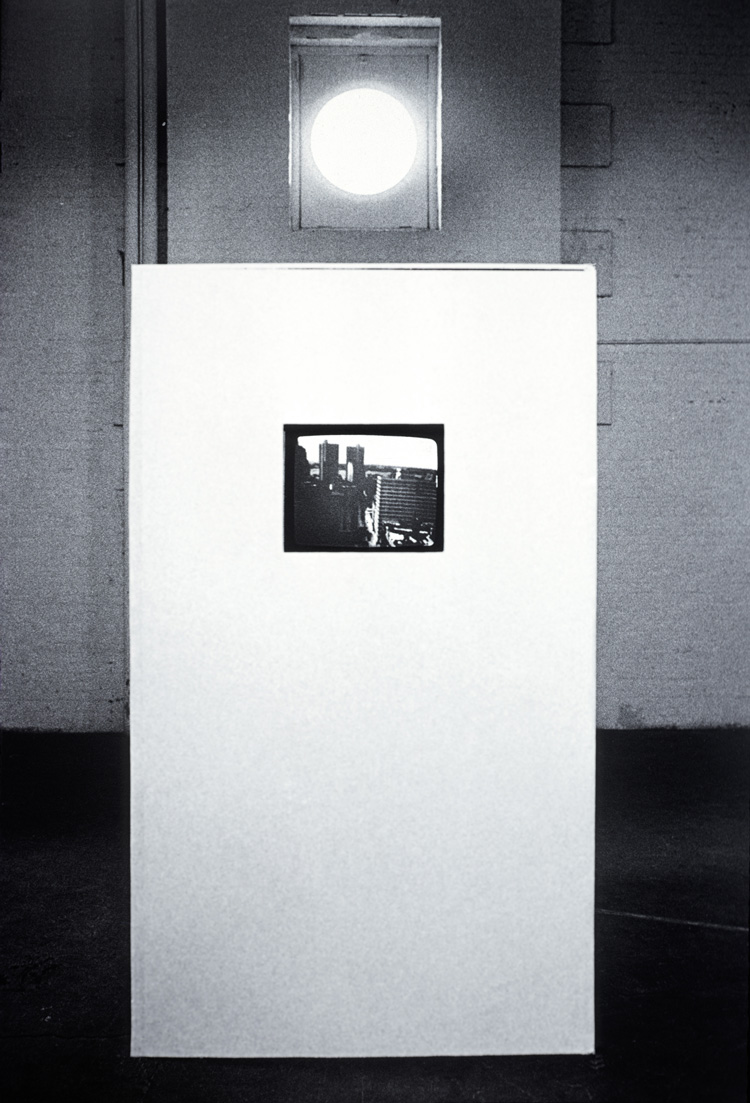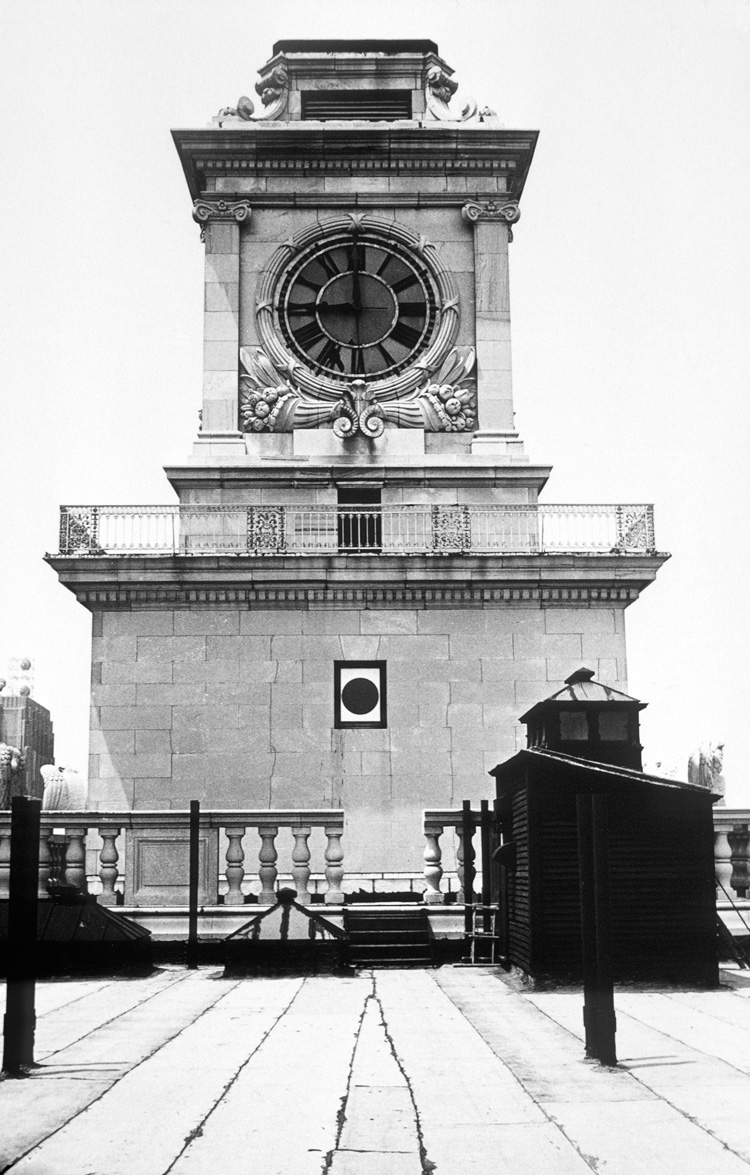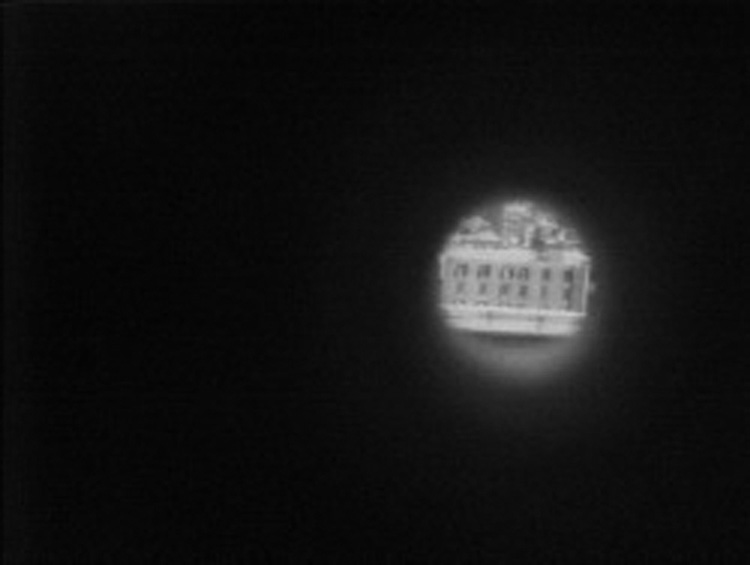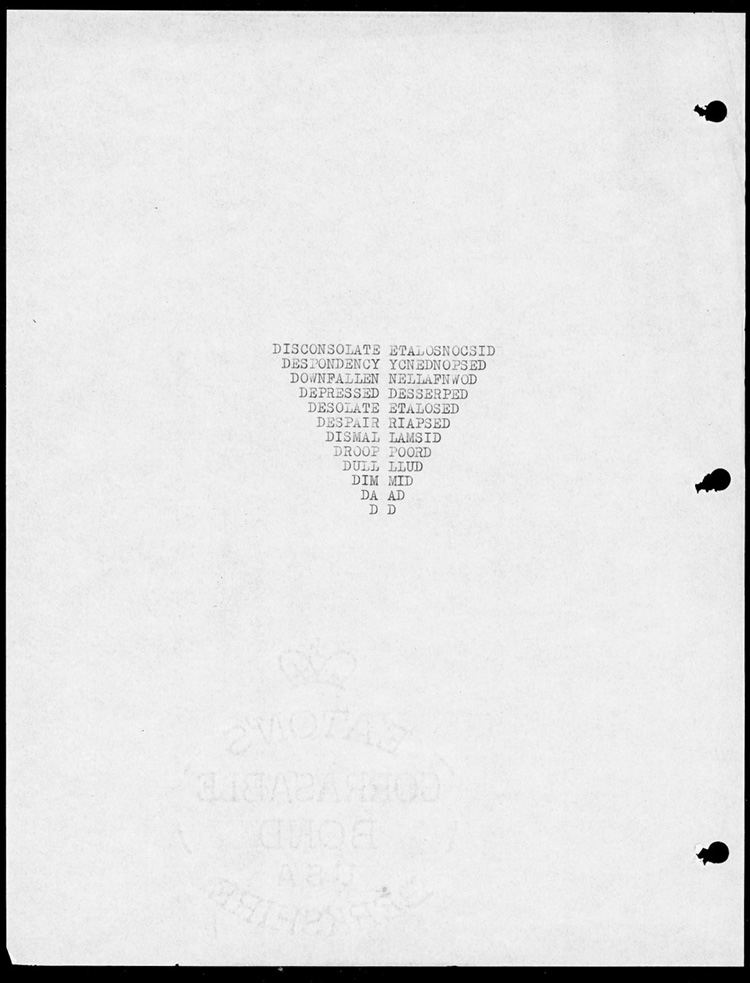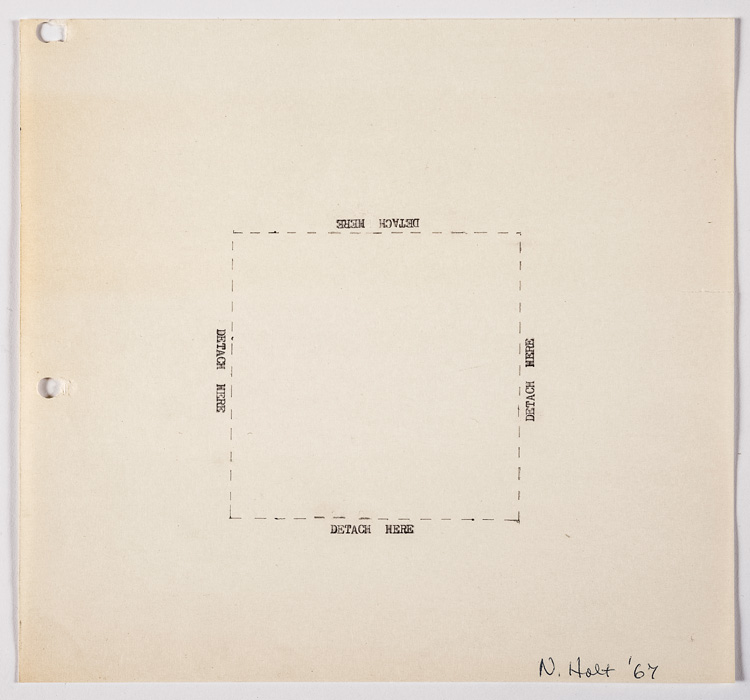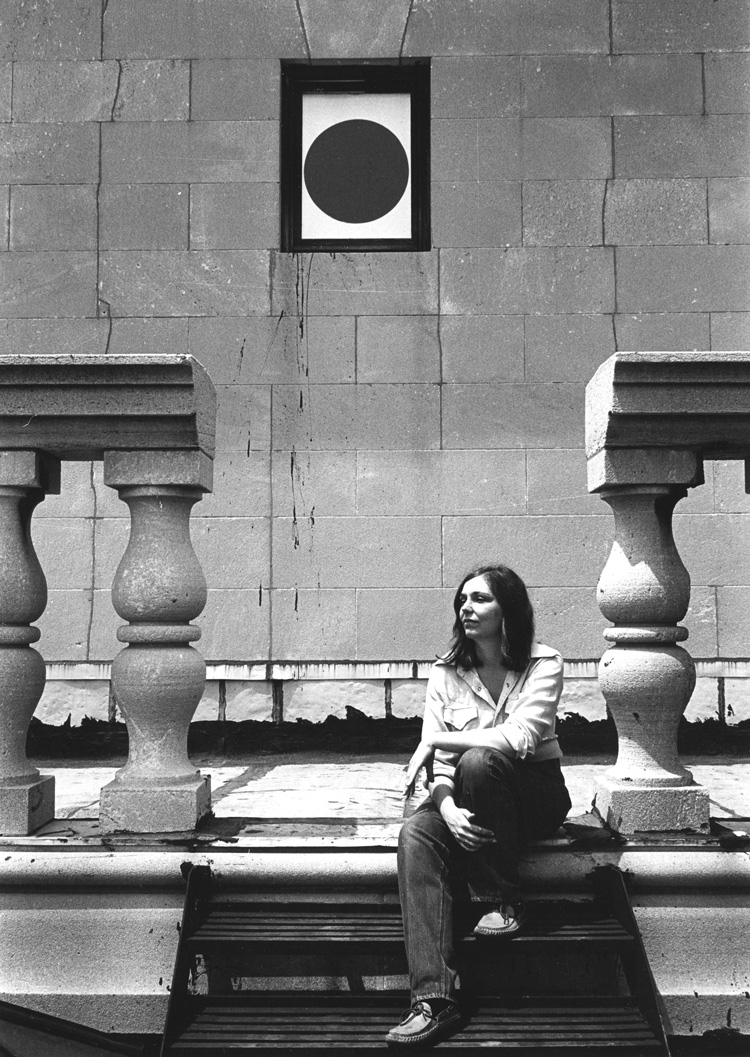

Parafin, London
24 September – 14 November 2020
by BETH WILLIAMSON
Nancy Holt (1938-2014) is often spoken about as the wife of the artist Robert Smithson (1938-73) – they married in 1963 – and her work is not always given the attention it deserves, although this is beginning to change. Despite outliving Smithson by more than 40 years and continuing to work prolifically in that period, this exhibition focuses on Holt’s early output, from the late 60s and early 70s. All except two of the works included in Parafin’s exhibition were made in Smithson’s lifetime. Yet rather than inviting a comparison with Smithson’s work, these early works by Holt instead act to underline her unique concerns with language and perception, and the start of her exploration of the circle in later works such as Sun Tunnels (1973-76), a site-specific piece located in the great western basin in Utah.
[image19]
Parafin is a small gallery, but this exhibition is the perfect scale for it. It is intimate and welcoming. Sharing in Holt’s small-scale photographs and works on paper in this space seems an act of generosity on the part of the artist, one that has lasted beyond her lifetime. She began creating concrete poems and text-based works in 1966 and, in a 1972 diary journal entry, noted her preoccupation with making words “concrete through vision”. Concrete Poem (1968) shows a collection of large black letters strewn down a set of steps that appear to be made of concrete, a material nod to the Beat and concrete poets.
[image3]
[image7]
Chinese Dinner (1972) struck me as a particularly poignant work. The joy of sharing Chinese fortune cookies around the dinner table with friends is both its form and its context. Four “fortunes” are set out at the corners of a square, Within the square, eight compass points are marked in a circle, with Chinese names against each. At the top of the page, the names of Holt, her husband and two friends are listed, each with one of the Chinese names against them, quickly bringing to mind the image of them sitting around the table. Holt and Smithson are both there, along with Angela Reaves and Carl Andre. Despite the intimate setting of friends sharing food and fortunes, there is room for the viewer here and that is a generous gesture. In The World Through a Circle (1970) Holt engages with the circle once again and we are invited to focus on some fundamental elements, Earth, sky, water, sun, moon, star, bringing us into close focus with some things normally experienced on a huge scale.
[image20]
Locator with Mirror (1972) acts as a breakpoint in the exhibition. Like other “locators” in Holt’s work, this is a viewfinder, an exploration of perception, a way of framing the world around us and, in this case, our own mirror-view. A vertical steel pipe supports a smaller horizonal hollow pipe through which you can gaze at a specific point. Holt was attracted to the locators’ ability to “zero in on things”, as she put it. Positioned at eye level, the locators enable a concentration of vision. In this instance, your own image is reflected in the mirror along with the locator itself. It is ultimately a meditation on looking. The obvious associations with Sun Tunnels need little elaboration. Sun Tunnels provided a new lens through which to view nature and, specifically, the summer and winter solstice. As Holt wrote of the work in 1977: “I wanted to bring the vast space of the desert back to human scale. I had no desire to make a megalithic monument. The panoramic view of the landscape is too overwhelming to take in without visual reference points … through the tunnels, parts of the landscape are framed and come into focus … the work encloses surrounds.” Locator with Mirror encloses and surrounds, too.
[image16]
The four-channel video work Points of View (1974) requires us to walk around it to see all channels. This group of four videos with accompanying conversations moves us from the generosity of the two-dimensional works to a position of privilege as we are permitted to eavesdrop on conversations between Lucy Lippard and Richard Serra, Liza Béar and Klaus Kertess, Carle Andre and Ruth Kligman, and Bruce Boice and Tina Girouard. Each conversation is accompanied by a video, entirely of its time and often featuring Holt’s signature circle: this time it is a circle of light shining in the corner of an otherwise dark video screen.
[image12]
In a world of words (heard on the audio conversations) and things (seen on the video screens), the viewer and the commentators are engaged in an act of interpretation, especially as objects are glimpsed only through partial views. This is a work worth seeing, not only to get a better sense of some of Holt’s enduring themes, but also to hear the voices of some of minimalism’s best-known artists and critics.
[image11]
Points of View was originally installed at the Clocktower Gallery in New York City in 1974. I really appreciated the documentary photographs of that installation included in this exhibition and the additional context provided, which focuses our attention on Holt’s engagement with visual perception and interpretation.
[image4]
Downstairs in Parafin, 19 inkjet prints fill the gallery walls. Printed from the original 126 format transparencies, California Sun Signs (1972) are literally what they say they are, signs in the Californian landscape including the word “sun”. Sunland, Sunkist, Sunny Dunes, Sunset Palms – you get the idea. The language, the vivid colours, the repetition of “sun” and the sunlit scenes make uplifting viewing. They appear as found images, much in the same way as we find shells or pebbles on the beach or collect postcards from holiday destinations.
This small exhibition of Holt’s beginnings in concrete poetry, photography and video gives us significant insight into her career as it unfurled in the following decades. While there is a great deal more to be said, Parafin has hopefully started an important conversation about Holt’s work.
